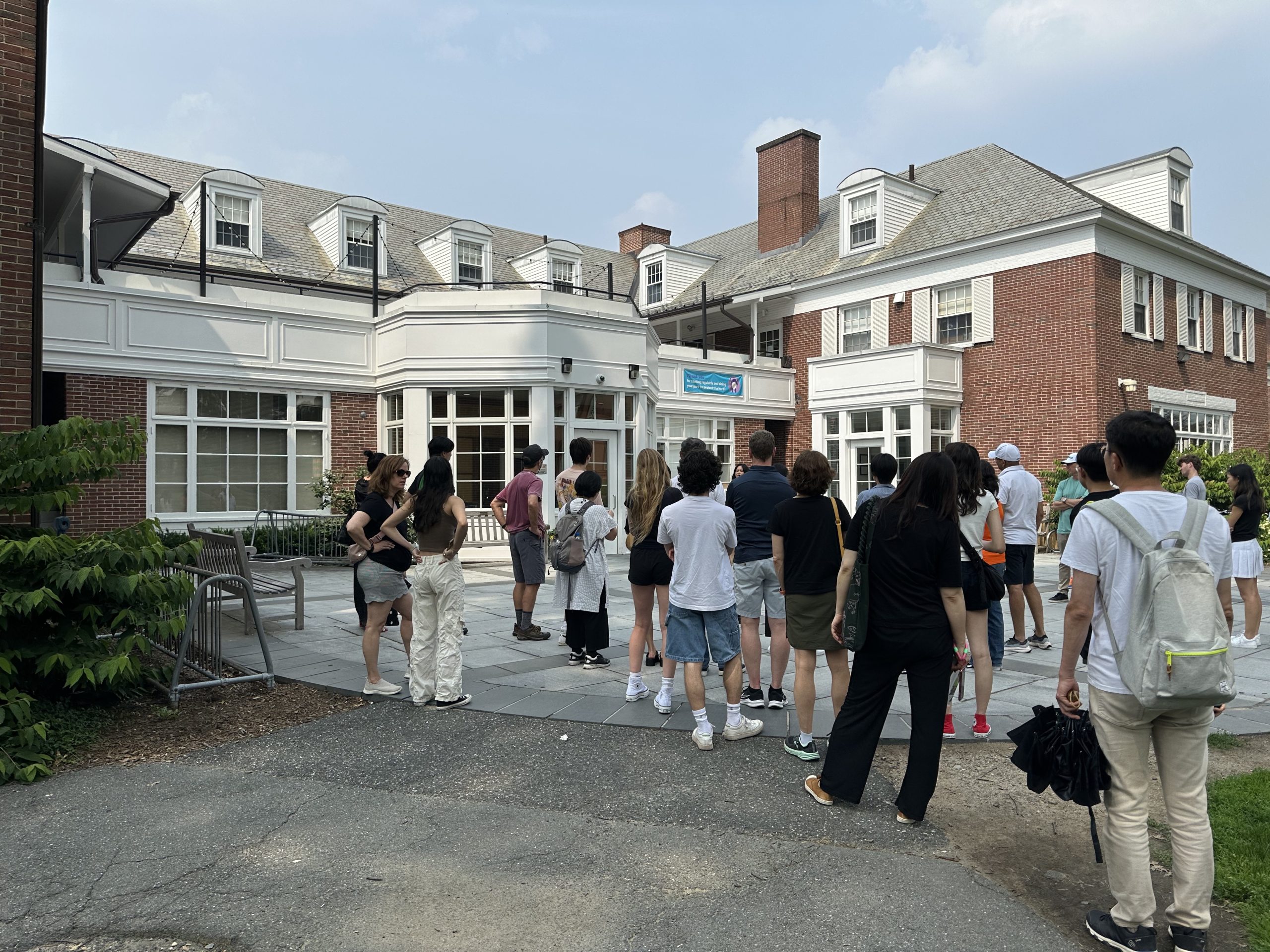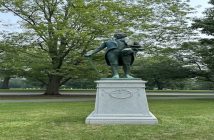After visiting Williams, I had to stop by its rival, Amherst College, which is ranked just one place beneath by U.S. News & World Report. Williams and Amherst’s rivalry has a long history. The latter’s first president, Zephaniah Swift Moore, was a former president of Williams College. In simple words, he stole half of the students at Williams and ran to North Hampton to form an equally impressive school. Almost to protect itself, Amherst is part of a five-college consortium that shares classes, resources, and extracurricular activities. The members are Smith College, Mount Holyoke College, Hampshire College, and the University of Massachusetts. However, Williams is still a strong competitor on its own, especially in varsity sports. In a Division III football game, Amherst lost by 21 margins, and for revenge spray-painted a gigantic purple “A” on Williams’ field. Williams students defended their school spirit by driving to Amherst in a ramshackle car at midnight to spray-paint a purple “B+” on Amherst’s campus. Not only do the two schools share a signature color, purple, but they are similar in terms of sports ranking. Amherst falls behind Williams by one slot.


My experience at Amherst, though, was brilliant. Admissions officer Will gave visitors the most honest, fair, and transparent speech I have ever seen about the application process, which, as we all know, is translucent to say the best. First, he understood that all liberal arts colleges in the New England Small College Athletic Conference (NESCAC) are somewhat similar (Williams, Amherst, Bowdoin, Bates, Colby, Connecticut, Hamilton, Middlebury, Trinity, Tufts, Wesleyan): small, selective, preppy. Each one has its individual flair, and Will wanted to make Amherst stand out. Here is what I learned:
Like Hamilton College, another NESCAC gem I reviewed in a previous article, Amherst has an open curriculum. That means two things. One, everyone in your class actively chose it. They want to be there, so discussions will be heated and creative sparks will fly. The high school days of only three teacher’s pets raising their hands too often in a class are gone. Two, you can take only classes you want to and stop taking those you despise. That said, your VIP service academic advisor will encourage you to explore fields outside of your comfort zone and fulfill an unofficial distribution requirement. If you really hate math, calculus might be too much, but how about statistics?
Amherst’s position in the five-college consortium is also unique. Some students never take a class at another member college, but in their classes might be one or two students from the consortium, and that is both an eye-opener and fuel for a diverse perspective. Sports teams and extracurricular activities also benefit from cross-campus interaction. For example. theatre groups flourish among the five colleges, providing five times the original opportunities for auditioning and performing.


Now on to the campus tour. Amherst actually doesn’t have the most impressive design, despite the USD 3.32 billion endowment – most of it used for academic resources and hardware. Many of Amherst’s buildings are modern and undergo construction during summer break. In my opinion, the red brick buildings on green grass paled in comparison to Williams College. The inside was rather conventional, too. The old yet simple aura reminded me of Peking University, close to home. The one and only dining hall on campus, Valentine, cannot hold all 1,898 students at once, but no one ever struggles to find a seat because different people have different dining schedules. The other three cafés each cater to different types of snacking. Science Center Café is reportedly good for late-night cravings, Grab-n-Go is free and good for morning and afternoon snacks (some students hoard yogurts), and Frost Café is good for pastries, smoothies, juices, and coffee.


Let’s talk academics. Amherst is very collaborative rather than competitive. A little story from Covid times: At first, only freshmen and seniors returned to campus. The seniors became friends and mentors for their little counterparts and left everyone shocked. When asked, seniors said they wanted to support freshmen and make them feel at home because when they were first-years themselves, the now graduated seniors did it for them too. It’s a longstanding tradition. Studying abroad is also popular. You pay the tuition plus the abroad fee. Be careful, because not all credits transfer and not all major requirements are fulfilled. Students usually consult their academic advisor before choosing a study abroad program that is the best for them. My tour guide, an economics major with a sociology minor, is going to Korea. Amherst’s most notorious major is English and Creative Writing. It’s usually the class students will say “changed my life” or is “my favorite class ever” or has the “best professors ever” about. Many of Amherst’s shiniest alums were once English and Creative Writing majors. Speaking of alums, most are willing to help current students. As long as they keep their emails up to date, writing a simple letter will earn you genuine, useful advice.


Amherst fun facts:
- Amherst’s location is interesting. It is not only part of a consortium, plenty of famous boarding schools and private preparatory schools are also located in that particular rural area of Massachusetts
- Like Williams, Amherst doesn’t care about demonstrated interest. It doesn’t even have an interview.
- Around 36-38 percent of classes are filled by early-decision applicants. The regular decision acceptance rate is around nine percent. Early decision bumps the acceptance rate to 25 percent.
- The percentage of admitted international students is around ten percent. So, the school is definitely hard to get into
- Like Williams, students can also trade the supplement essay for a 3-5-page academic paper that is NOT a lab report. A tip from my tour guide – don’t do that. Choose the supplement essay and make it so unique that you are sure no one else is writing the same thing
- Professors are so caring, helpful, and encouraging. It’s very difficult to make them think you are stupid, even though they are very accomplished scholars and industry leaders with multiple prizes and publications and research results. They think you are in Amherst already, so you are smart.
- Some professors have side interests beyond their jobs that benefit students in unexpected ways. My tour guide was Chinese, from Southern California, so she often practiced Chinese with Professor Cheng, one of her favorites.
- There are 34 residential halls in Amherst. Almost all students live for four years on campus, and housing is always guaranteed. King Hall is apparently the smallest, and students can hold hands when they sleep.
- President John F. Kennedy gave his last speech on the steps of Johnson Chapel. Most of us choose not to think about it.
- There is a natural geology museum in Amherst. It’s an actual museum that is open from 8am to 5pm


Images: Helen Wang




